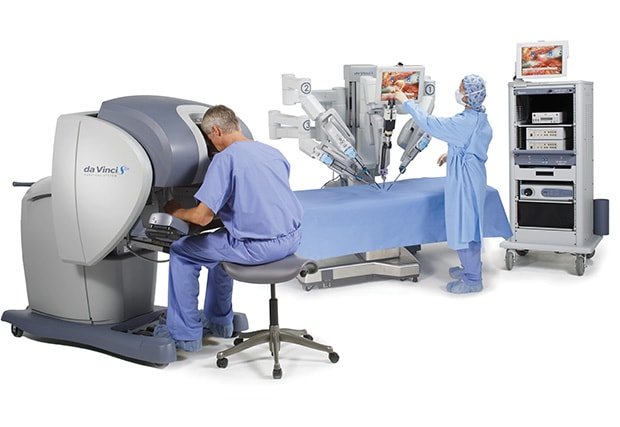Gains in medical technology are turning surgery from a major interruption to a small bump in the road. The incisions surgeons are making are smaller and can cause less trauma, often leading to a faster recovery. This is made possible with technology like the da Vinci® Si HD™ Surgical System, now at Northern Nevada Medical Center. The hospital acquired the system to expand surgical options for patients in the areas of gynecology, urology and general surgery.
More Treatment for More Patients
Keith Covert, Director of Surgical Services at Northern Nevada Medical Center, says bringing in da Vinci is a big step for NNMC and the surrounding community.
“Our goal is to invest all of our resources into a high level of quality and service, so that patients can experience less pain, less scarring, a faster recovery and a better surgical outcome,” says Covert. “By introducing robotic-assisted surgery here, we’re increasing access and ensuring this level of quality is available to more people.”
Added Precision, Less Discomfort
Medically, the word “invasive” means entry into the human body. When surgery can make that entry less impactful, it’s called minimally invasive. This is the theory behind the da Vinci Surgical System. Surgeons who operate the system are specially trained in robotic surgery and are in complete control during the operation.
To start, the instruments and a miniature camera are placed in the patient’s body through incisions measuring from ¼-inch to 1-inch long. The instruments are hinged – not rigid – so they can get to difficult-to-reach places. The surgeon is positioned at a console, which shows magnified images of the patient’s anatomy. High-definition pictures enable him or her to see what may not be visible with the human eye, and da Vinci’s overhead arms provide access from nearly any angle.
The Goal: A Safe, Faster Return Home
Less operative trauma as a result of added precision and smaller incisions can lead to a faster recovery and a shorter stay in the hospital. This is illustrated by comparing a traditional hysterectomy (removal of the uterus) to one performed with da Vinci. An open operation requires an incision spanning a woman’s abdomen, which has to be closed up in layers with sutures and staples. The patient typically spends three days in the hospital and eight weeks recovering from the hysterectomy at home.
“With da Vinci, a hysterectomy can be performed with three very small incisions, and women often go home the same day,” says Covert. “By focusing on this kind of quality and service, we’re helping patients have a better experience here, and helping them get back to what they need and love to do more quickly.”
To find a da Vinci-trained surgeon, call our free physician referral line at 775-356-6662.

